Google Nexus 4 Review - Google's new Flagship
by Brian Klug on November 13, 2012 8:45 AM EST- Posted in
- Smartphones
- LG
- Android
- Mobile
- APQ8064
- Nexus 4
- Android 4.2
- MDM9215
The Nexus 4 is based around a 1.5 GHz Qualcomm Snapdragon S4 Pro SoC, the quad core Krait APQ8064 with Adreno 320 GPU, which is still built on a 28nm process. The combination of APQ8064 for AP and MDM9x15 for baseband is Qualcomm's Fusion 3 platform, and the Nexus 4 and Optimus G are the first phones to market based on that platform. This is a relatively unique opportunity for Nexus, which until recently wasn't really first to market with the latest and greatest silicon.
A while ago we posted our Nexus 4 and Nexus 10 performance preview. At that point we still had a lot of testing to perform, and many people noted that the Nexus 4 performance was far behind the LG Optimus G despite it being based on the same platform. Later, some people noticed that I had uploaded another set of results from GLBenchmark 2.5 to the online result browser with much better performance. The difference wasn't some over the air software update but rather that I was running some of the tests with the Nexus 4 in a ziplock bag inside the freezer to mitigate any condensation problems, and simultaneously nail down any possible thermal throttling.
I've re-run everything and can confirm obviously that there was thermal throttling going on affecting some of the results, and have included the new results wherever there was a deviation from previous. For those wondering why the LG Optimus G wasn't affected in spite of it having the same platform, the reason is because the results from the Optimus G were run in parts due to some instability affecting its ability to run a complete set of tests without crashing. The Nexus 4 has newer drivers that don't crash during a full GLBenchmark 2.5 run but as a result run the device long enough for thermal throttling to kick in.
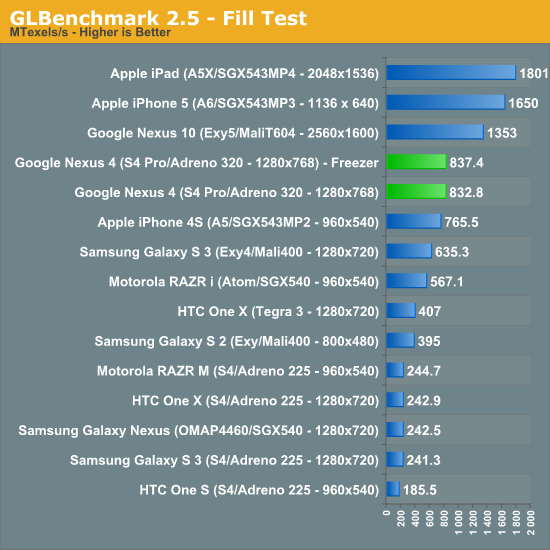
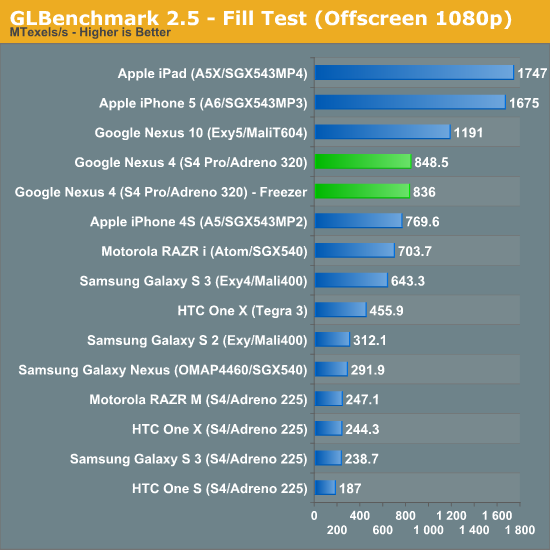
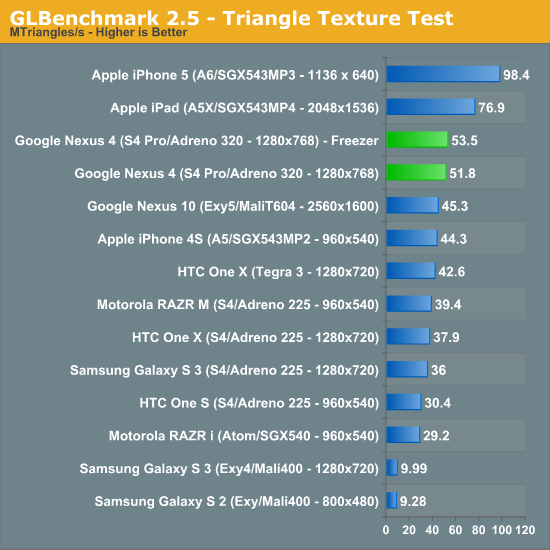
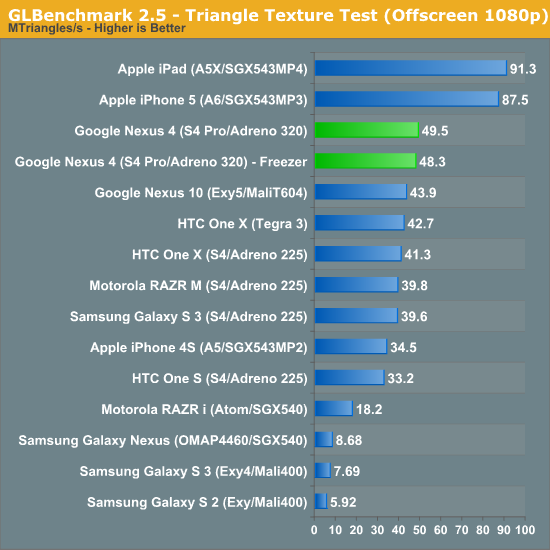
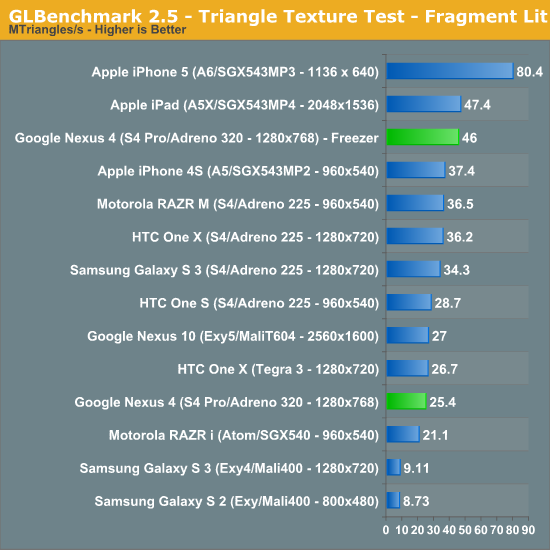
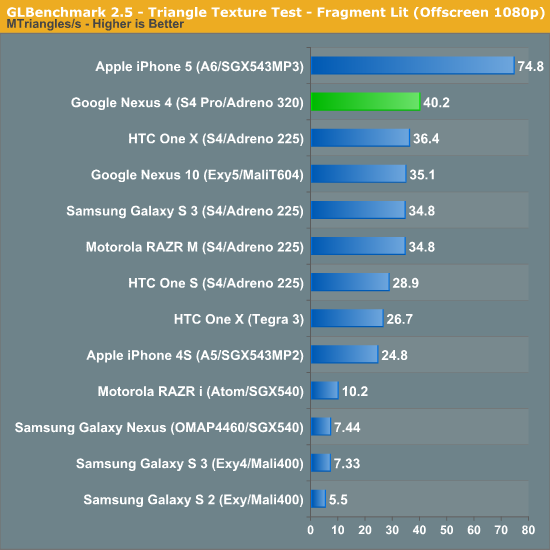
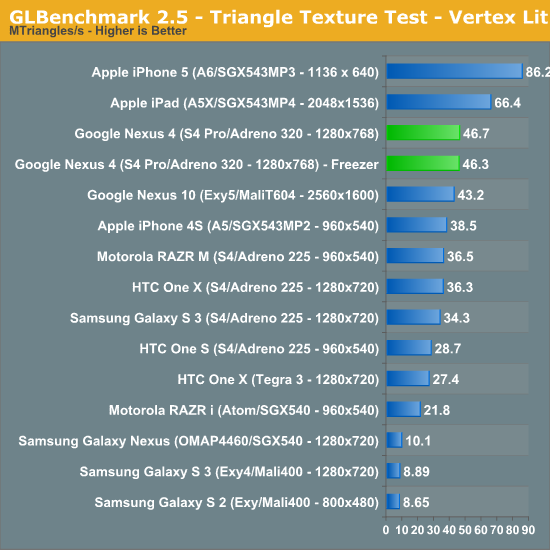
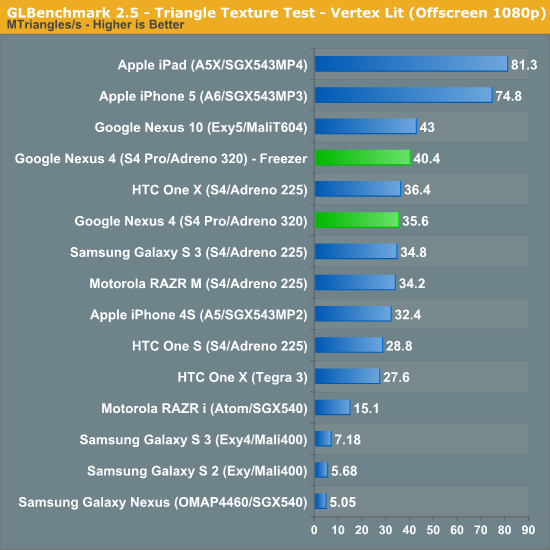
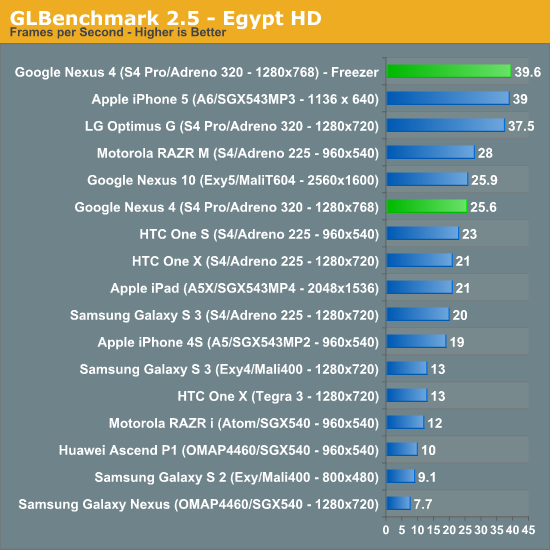
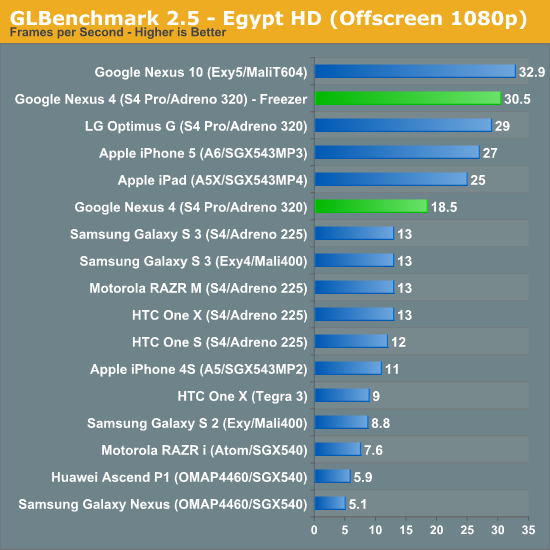
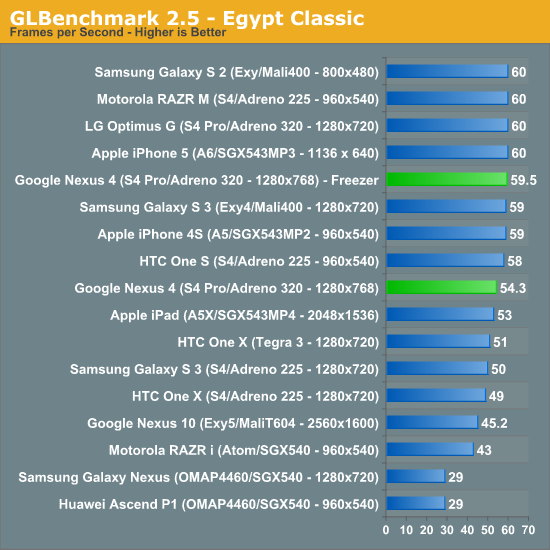
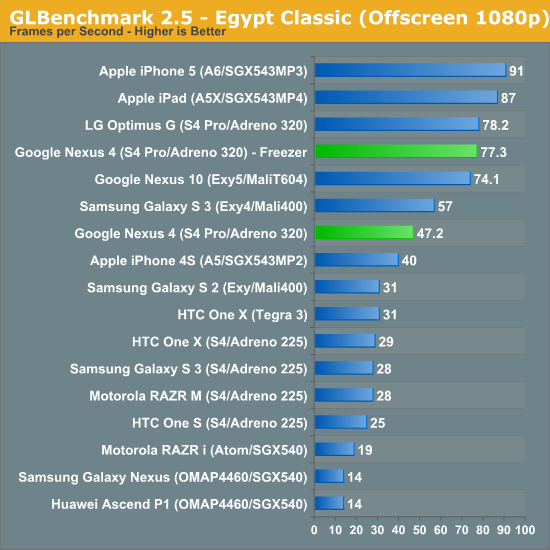
The result of the tests in the freezer results that are much closer to what we'd expect based on the APQ8064 MDP/T runs and the Optimus G numbers I saw in Korea.
When it comes to the CPU side of things there were results also affected by thermal throttling. I spaced some of those runs out (unintentionally) enough that performance didn't change, but for other things it did affect performance. I can't tell what GPU clocks end up being when the SoC decides to throttle, but it is possible to nail down what CPU performance state APQ8064 settles down into when there's throttling going on by looking at the state tables.

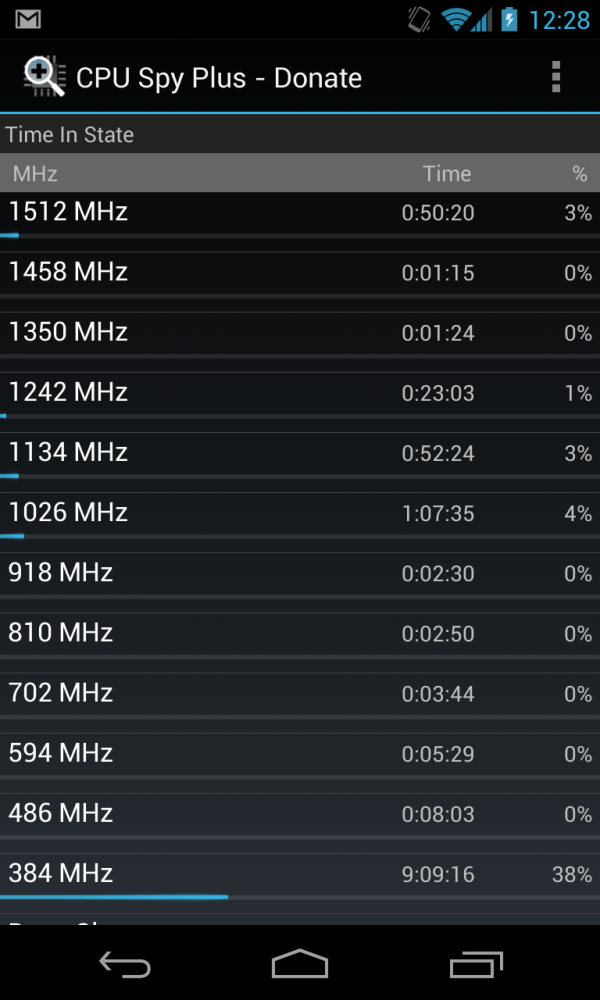
Left - 1.134 GHz during throttling (running tests), Right - All the performance states
I can see the Nexus 4 not use any of the performance states above 1134 MHz when it's getting hot, as shown in the images above. I've tweeted a link to the pastebin for thermald.conf which I believe configures the thermal cutoffs and will be interesting to kernel hackers trying to play with these values.
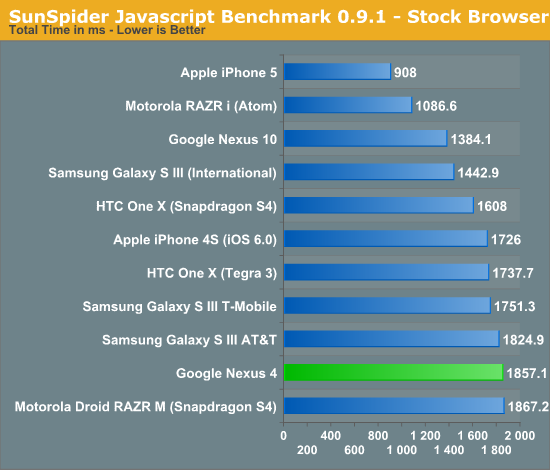
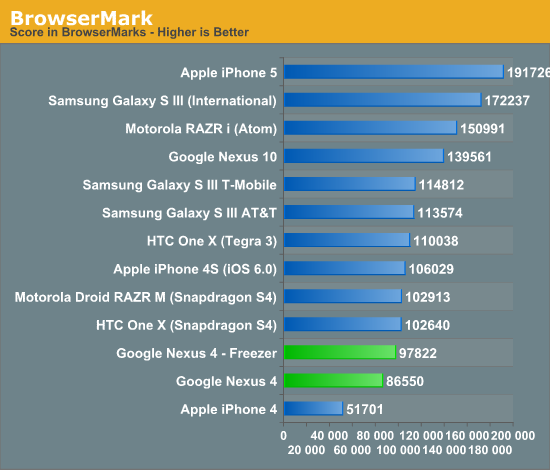
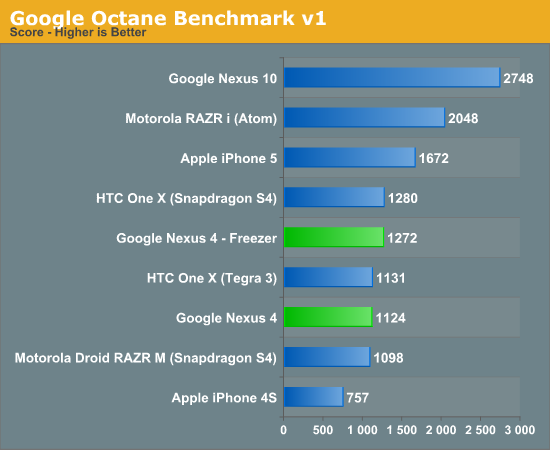
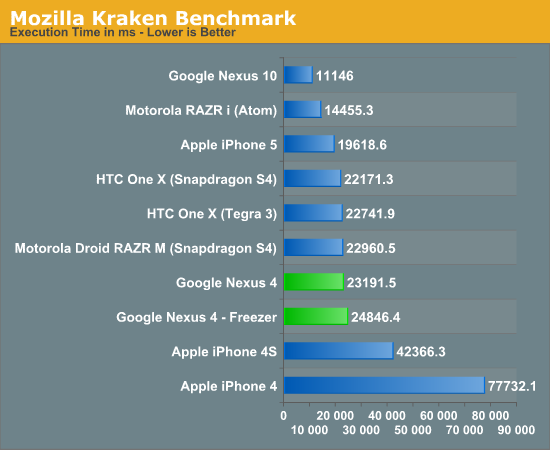
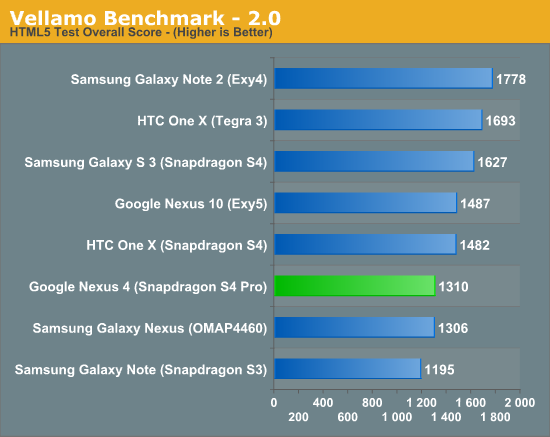
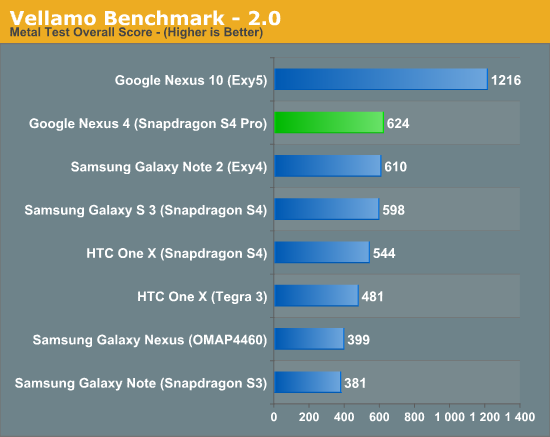
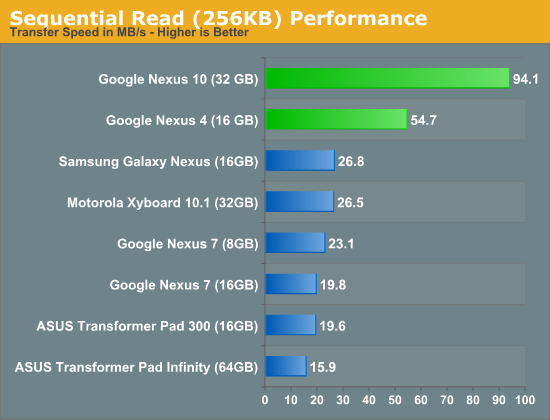
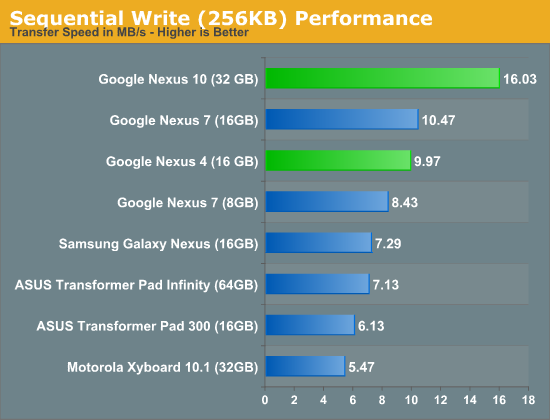
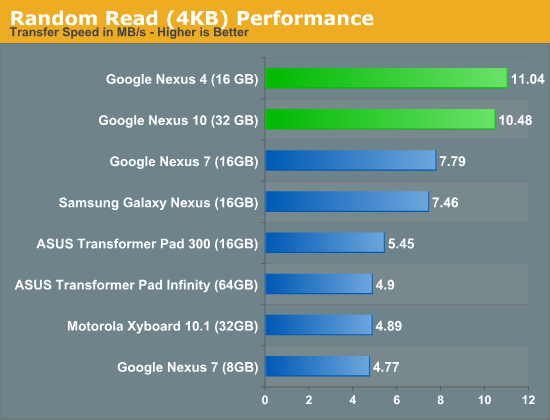
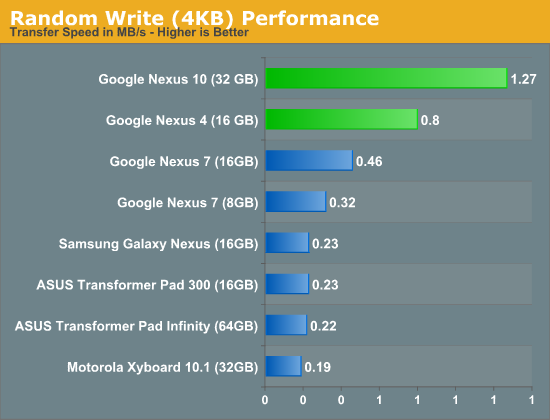
Our CPU performance side is unfortunately still dominated by JavaScript performance tests. The story there is that the Nexus 4 ships with Chrome (and originally shipped with a newer build of Chrome than what was on the market - we were running that updated version all along) and thus the mainline version of the V8 JavaScript engine. OEMs perform their own optimizations to the V8 library, and try to upstream whatever they can into the main project, but in the case of Chrome for Android that means V8 sans secret OEM sauce.










188 Comments
View All Comments
dishayu - Wednesday, November 14, 2012 - link
Meh, that is how they statistically show you that thermal throttling is affecting the performance. Your accusation would have help good if they had only published the freezer benchmarks. But they published both because they wanted to showcase that the phone thermally throttles itself (i.e. a negative point about the phone)... How exactly is that partial?kgh00007 - Monday, November 19, 2012 - link
I think it is particularly significant that this phone was selected to be the first phone that was actually put in a freezer and the results published, why not the iPhone or some other phone that was known to be trottling?Seriously, think about it.
There is a big difference between stating that a phone throttles and the theoretical performance is X and actually putting a phone in the freezer and publishing the resulting benchmarks.
I am entitled to my opinion, and my opinion here is that somebody is working for the man, the wrong man.
kgh00007 - Monday, November 19, 2012 - link
There is quite a big difference between stating that a phone is throttling and the theoretical performance should be X, and putting a phone in the freezer and publishing the resulting benchmarks.The choice of phone to be the first to recieve this treatment is suspicious to me.
My opinion, which I am entitled to, is that somebody is working for the man, the wrong man.
This is evident to me, think about it yourself.
thesavvymage - Wednesday, November 14, 2012 - link
they basically said "the phone IS being thermally throttled. here's what would happen if it wasnt..."nowhere does it ever say that the freezer tests would ever be indicative of a real world test. they are just showing for information
kgh00007 - Monday, November 19, 2012 - link
People are aready taklking in the comments about how this phone has to be put in the freezer in order to gain maximum performance from it.People are not saying the same about the iPhone, that is the significance.
As I said something fishy going on here and I don't like it.
In fact this is the first time Anandtech has dissapointed me with a review, but it is a rather large dissapointment.
galtma - Wednesday, November 14, 2012 - link
Is it feasible to replace the RAM in the N4 to upgrade it to 32gb? Where in the internals would you dig?noblemo - Wednesday, November 14, 2012 - link
I think you are referring to the NAND Flash, but in either case the NAND and RAM are soldered to the mainboard. Brian made the following comment in the section, "Inside the Nexus 4" (page 7 of the review) regarding the NAND:"I couldn’t get the can off of what appears to be the eMMC (the only remaining large package), we’ll have to see if anyone else wants to do some destructive digging to get that one."
He is referring to the device under the EMI shield (with a QR code label) in the lower left corner of this image:
http://images.anandtech.com/galleries/2435/Nexus-4...
praveen44 - Wednesday, November 14, 2012 - link
Excellent review.spiritrajat - Wednesday, November 14, 2012 - link
most exhaustive review..being an electronics engg myself i realy enjoyed going through the reveiw...job very well donenoblemo - Wednesday, November 14, 2012 - link
Q: Hey, Nexus 4, why so blue?A: Because no one at Google is responsible for display calibration.
It's unfortunate that color accuracy does not get more attention from manufacturers.
Was throttling observed and was there a noticeable impact during daily usage? Any thoughts on whether it would be an issue in climates with ambient temperatures greater than 30C?